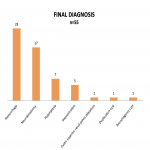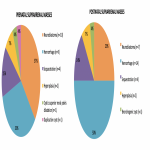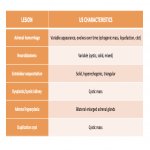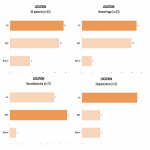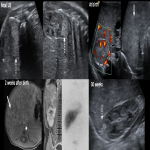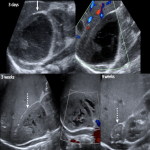Keywords:
Foetal imaging, Paediatric, MR, Ultrasound, Education, eLearning, Congenital, Foetus, Haemorrhage
Authors:
C. C. Sangüesa Nebot, D. Veiga Canuto, R. Llorens-Salvador
DOI:
10.26044/ecr2022/C-13280
Results
Congenital masses in suprarenal area can be lesions that arise from adrenal gland and lesions from neighboring organs [1].
We retrospectively reviewed 55 patients with congenital suprarenal. 31 were girls and 24 were boys. Most frequent final diagnosis was hemorrhage (n=23), followed by neuroblastoma (n=17).
27 cases were diagnosed antenatally on ultrasound study between week 20 and week 40, while 28 cases were identified after birth on postnatal ultrasound studies between day 0 and 90 days after birth. Fetal MR complemented US in some unclear diagnoses (n=10).
The most frequent diagnosis in children diagnosed antenatally (n=27) was neuroblastoma (n=10, 37%), while the most frequent diagnosis in neonatal period (n=28) was adrenal hemorrhage (n=14, 50%).
Ultrasound appearance also varied depending on the diagnostic period. On prenatal US most lesions were cystic (n=13, 48%), while on postnatal period most lesions were solid (n=18, 64%), and showed variable appearance.
Location of the lesions showed similar frequency on both sides (left: n=24; right: n=22), and lateral predominance changed depending on the entity studied.
The size (measured as biggest diameter in cm) was <5 cm in 20 cases, and =or> than 5cm in 8 cases (4 sequestrations, 3 neuroblastomas and 1 adrenal hemorrhage).
All the patients were studied because antenatal lesion was identified on US. Besides, postnatally 15 newborns showed different pathological signs and symptoms, being the most frequent urinary infection (n=3).
1 patient died among the 55 children because of neuroblastoma. Catecholamines were determined or available on medical records in 14 patients, and only were elevated in 2. Regarding treatment, observation was de treatment of choice in most of the patients (n=39), and 12 underwent surgery (4 sequestrations, 8 neuroblastomas).



